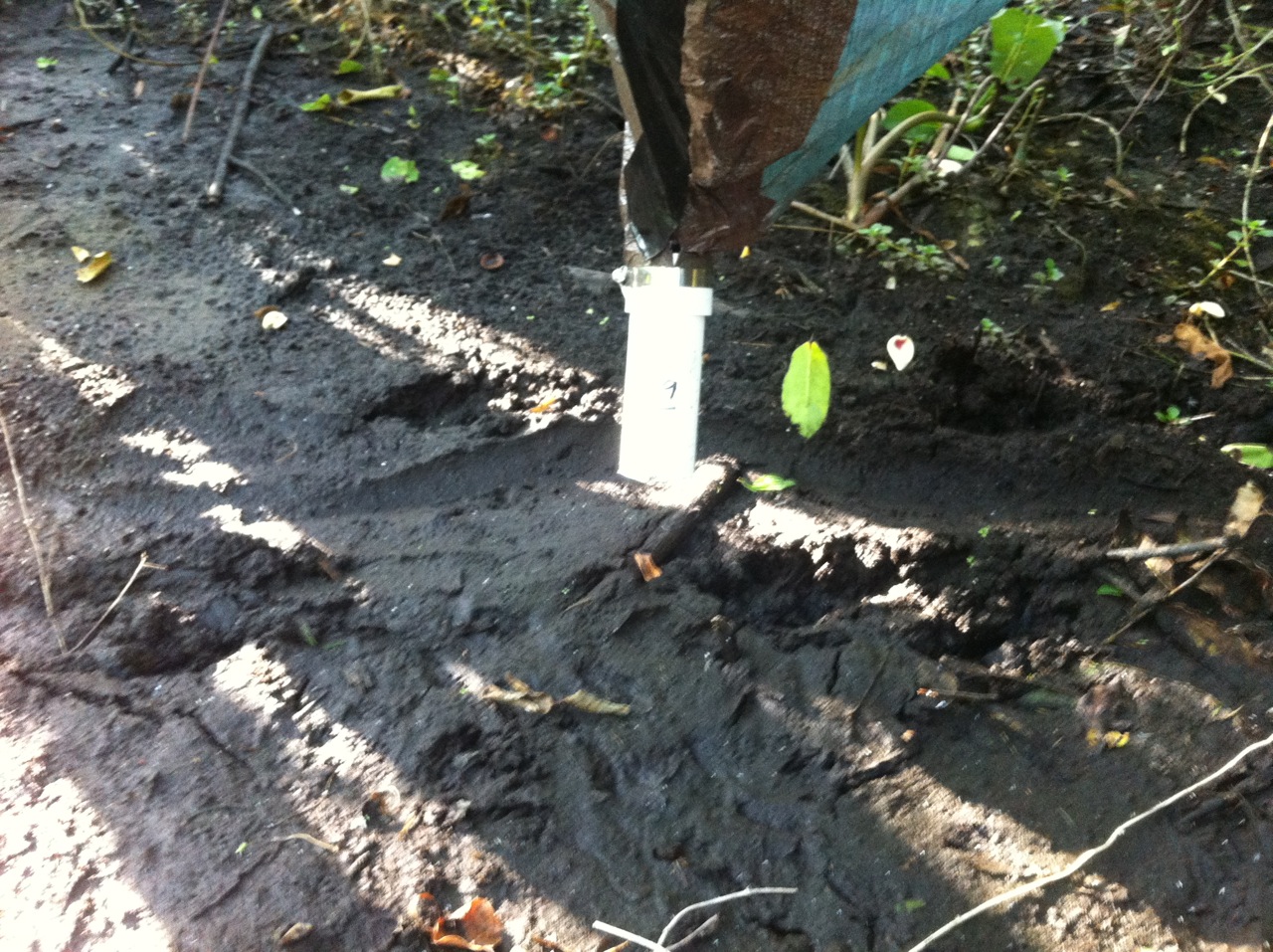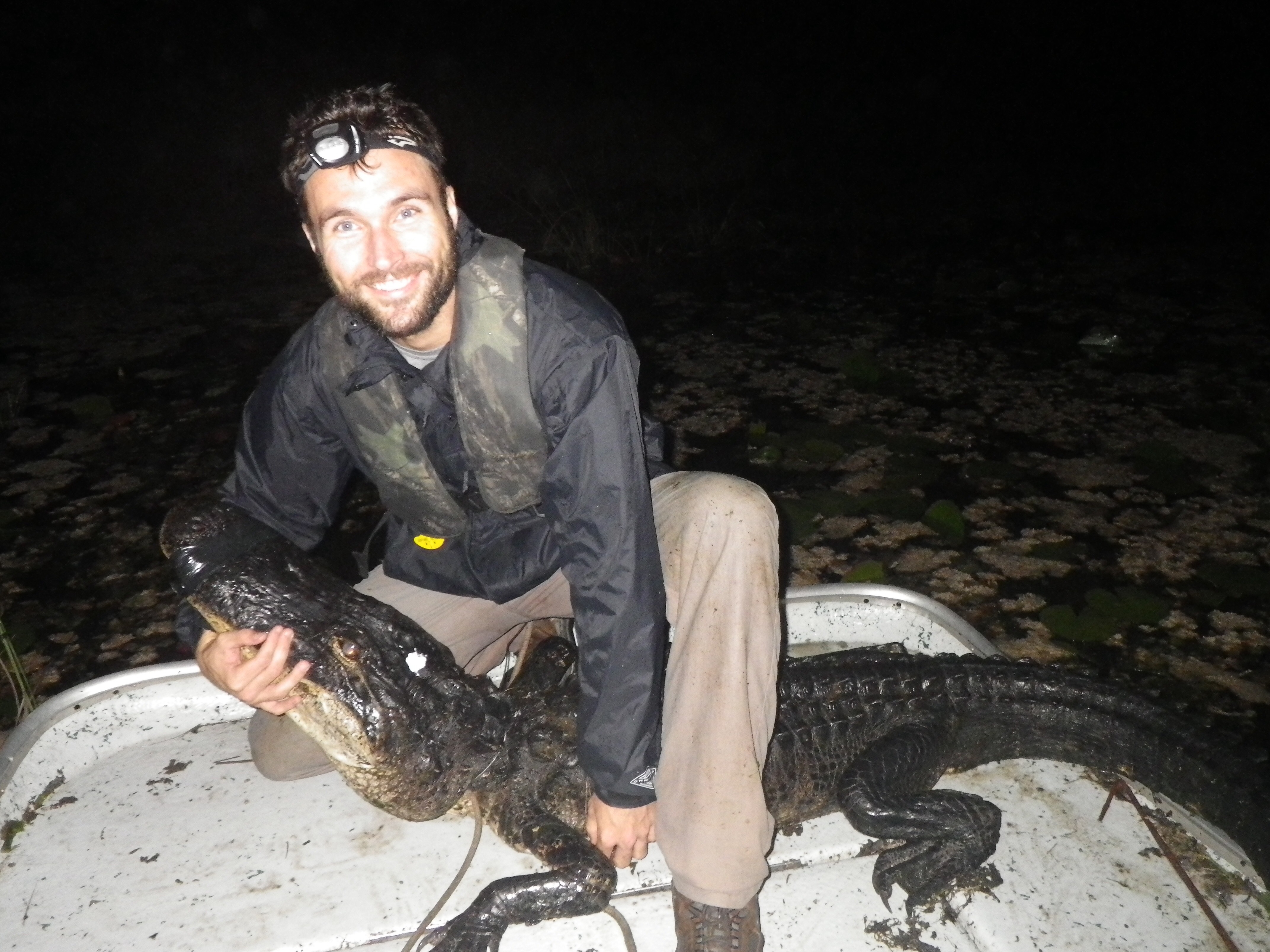Facilitation between nesting wading birds and alligators
Facilitation (a positive between-species exchange mediated through habitat improvement) is widespread and being increasingly recognized for its importance in structuring communities and shaping species’ distributions. For my thesis research, I assessed how a keystone species is affected by associating with a group of organisms it often consumes—yet also protects.
Wading birds (herons, egrets, storks, ibises, spoonbills) nest near alligators in the Everglades, probably because alligator presence deters devastating nest predators such as raccoons and opossums. My research at the University of Florida examined the other side of this relationship and assessed what benefits, if any, alligators might derive from associating with wading birds. The illustration below shows the four ways we believe alligators might benefit (from left to right):
- Juvenile birds foraging near colonies
- Increased aquatic prey abundance (e.g., sirens, crayfish, fishes) driven by nutrients from bird guano
- Chicks and other material falling from nests directly to alligators
- Nest predators drawn to colonies

Above: Hypothesized benefits to alligators from wading bird nesting colonies
We first estimated the amount of food via pathway #3 by examining 14 years of wading bird nest-success data and by catching fallen regurgitated fish. We found that regurgitant appears to be of minor importance to alligators, but fallen nestlings could be a significant source of food1. In prolific years, nestling carcasses alone could sustain most of the breeding female alligators in our study population for much of the dry season. Although we knew that alligators often can be observed near and within colonies (see this video and Fig S1 from here), we hadn’t yet demonstrated how this potentially substantive food source might affect alligators in the field.

Above: Alligator tracks directly underneath one of our throughfall traps
So to the field we went. We captured alligators in similar habitat with and without nesting colonies, and measured body condition via a morphometric index (i.e., a measure of mass in relation to length). We found significantly higher condition in colony alligators, even when controlling statistically for a range of environmental factors2. Given the magnitude of the difference we detected, there are likely population-level effects of wading bird nesting colonies on alligators. We also believe that associations between nesting birds and crocodilians could be widespread and ecologically important for many tropical and subtropical wetlands.

Above: My first captured alligator, a skinny 10.5 ft male
Publications:
- Nell LA, Frederick PC. 2015. Fallen nestlings and regurgitant as mechanisms of nutrient transfer from nesting wading birds to crocodilians. Wetlands 35:723–732. [link] [pdf]
- Nell LA, Frederick PC, Mazzotti FJ, Vliet KA, Brandt LA. 2016. Presence of breeding birds improves body condition for a crocodilian nest protector. PLOS ONE 11:e0149572. [link]
